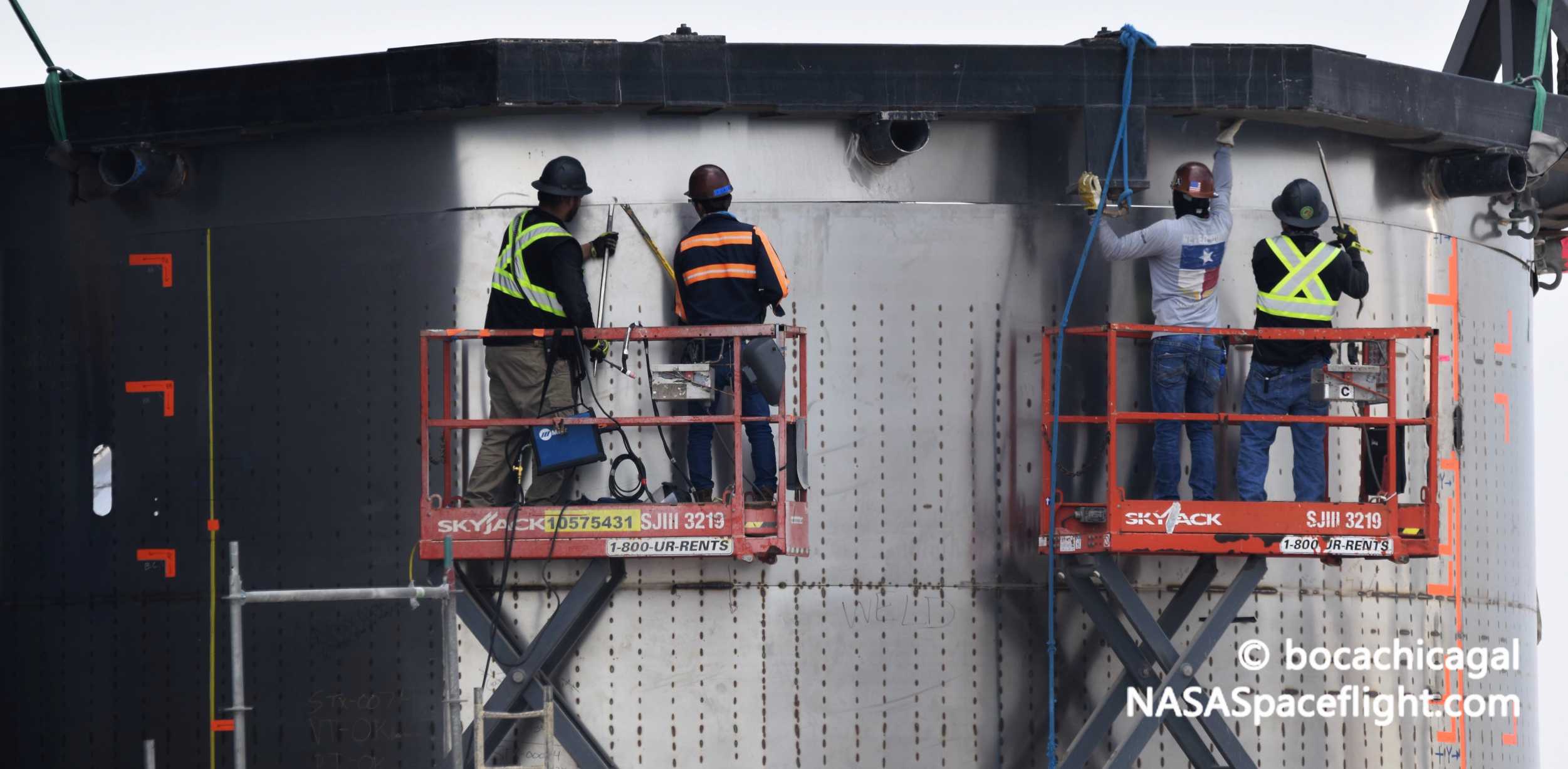

News
SpaceX’s next Starship prototype is already closing in on its first tests
Continuing a trend of massive steel rockets built in a matter of days and weeks instead of months, SpaceX’s next Starship prototype is already closing in on its first tests.
SpaceX’s newest vehicle is set to pick up where the third full-scale Starship prototype – coincidentally known as SN3 – left off after operator error lead to its premature destruction on April 3rd. Now a pile of scrap metal, that ship only made it partway through cryogenic proof testing when its upper tank – almost fully filled with chemically-neutral liquid nitrogen – toppled over and pulled the rest of the prototype with it. With (hopefully) improved test procedures, Starship SN4 is now set to carry that torch forward.
Following the late Starship SN1 and SN3 prototypes, SN4 is on track to be the third full-scale, functional Starship prototype built in a handful of weeks thanks to major factory upgrades SpaceX has completed in recent months. While the loss of any particular prototype is undoubtedly a setback each time it happens, such a high rate and (apparently) low cost of production means that no single failure should be a major disruption, allowing SpaceX to iterate incredibly quickly as it learns from a flurry of real-world tests.
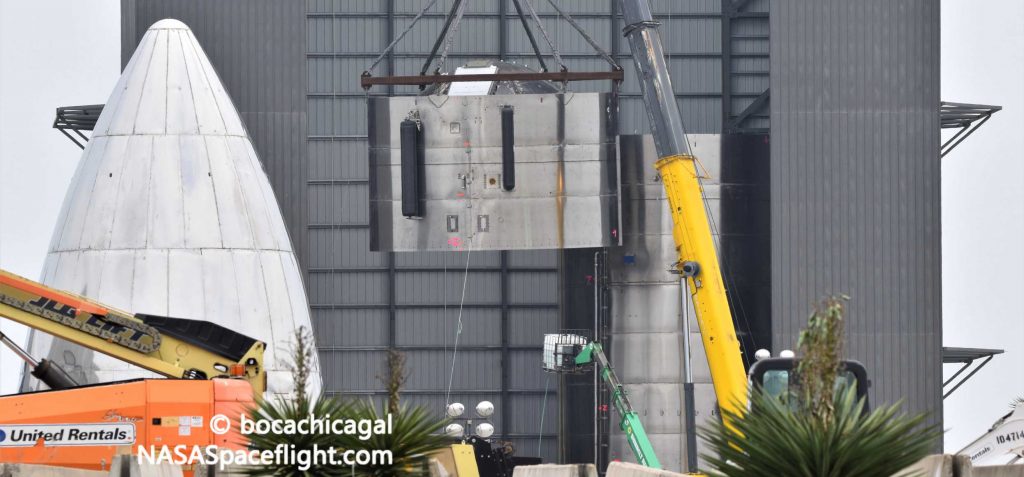
Like SN3, SpaceX’s next prototype will soon be fully stacked and transported down the road from the factory to a nearby launch and test facility, both situated directly on the South Texas Gulf Coast. Based on SN1 and SN3, SN4 could be just a week or so away from that transport milestone. SN3, for example, reached Starship SN4’s current state of assembly around March 20th. Eight days later, the vehicle was moved to the launch pad for its first tests.
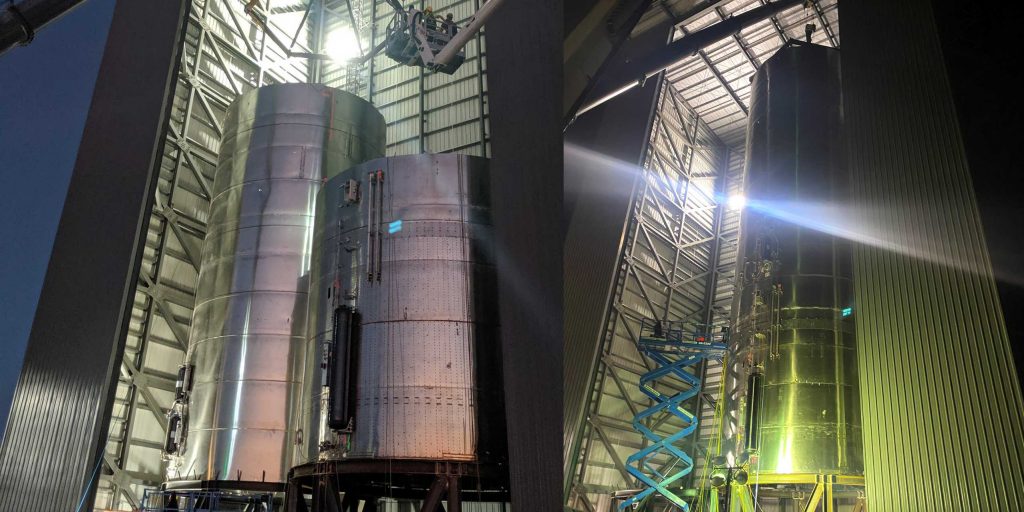
On April 12th, SpaceX technicians flipped Starship SN4’s aft-most section, doubling as a bottom dome of its liquid oxygen tank and a mounting point for three Raptor engines. Starship SN3 passed the same point around March 18th, just ten days before it was moved to the launch pad. Per SN3’s assembly schedule, it should be just 2-3 days before SpaceX wraps up Starship SN4’s engine section by adding another two rings, followed by the engine section’s integration with the rest of the rocket approximately 5-7 days from now.
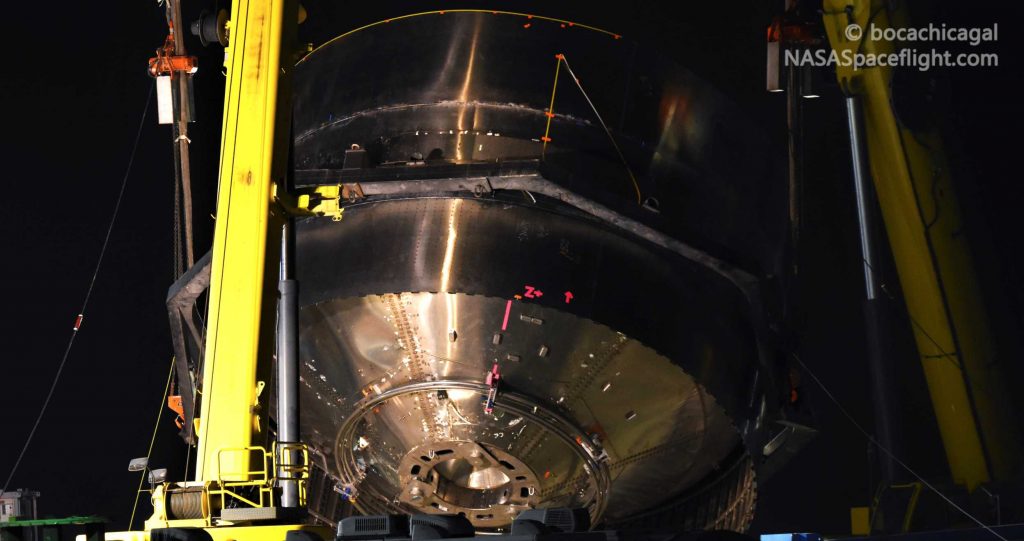
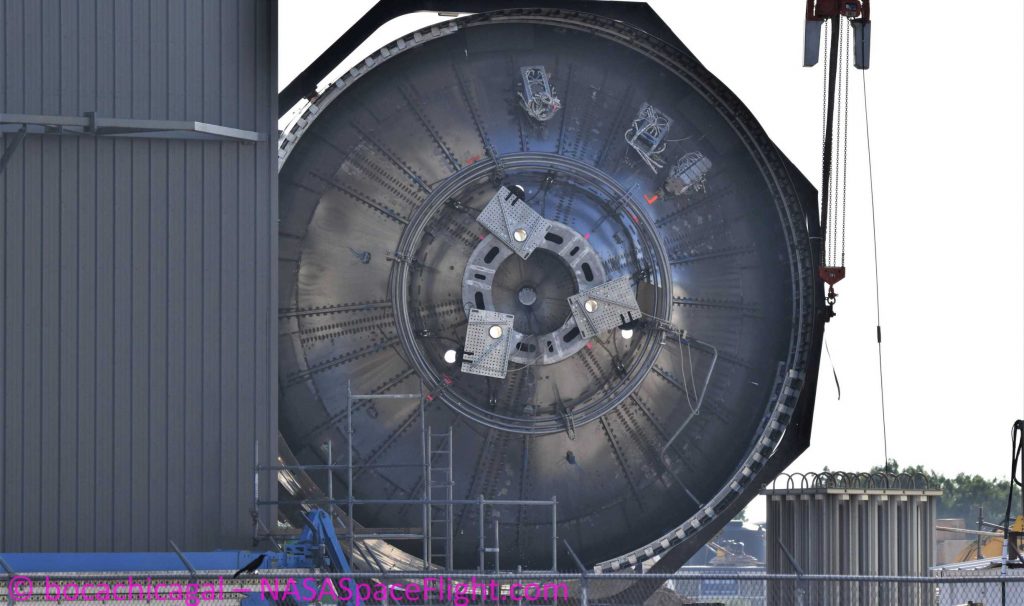
Based on Starship SN3’s behavior before a badly-designed test triggered the series of events that destroyed it, the ship appeared to be performing extremely well with its upper (methane) tank almost completely full of super-cool liquid nitrogen. If Starship SN4 does a similarly good job and makes it through the rest of the test that SN3 was unable to, SpaceX has three Raptors already tested and ready to go for their first triple-engine static fire ever.
At this point, those engines are simply waiting in a nearby hangar for a Starship prototype to be declared flight (or at least static fire) worthy. Even more excitingly, should both the engines and the Starship in question perform flawlessly during those tests, the first flights are expected to follow very soon after. Whether it’s able to summit that particular hurdle, Starship SN4’s current rate of production suggests that the ship will be ready to kick off testing later this month, perhaps less than three weeks after its predecessor kicked the bucket. Stay tuned!
News
Tesla begins Robotaxi certification push in Arizona: report
Tesla seems serious about expanding its Robotaxi service to several states in the coming months.

Tesla has initiated discussions with Arizona transportation regulators to certify its driverless Robotaxi service in the state, as per a recent report from Bloomberg News. The move follows Tesla’s launch of its Robotaxi pilot program in Austin, Texas, as well as CEO Elon Musk’s recent comments about the service’s expansion in the Bay Area.
The Arizona Department of Transportation confirmed to Bloomberg that Tesla has reached out to begin the certification process for autonomous ride-sharing operations in the state. While details remain limited, the outreach suggests that Tesla is serious about expanding its driverless Robotaxi service to several territories in the coming months.
The Arizona development comes as Tesla prepares to expand its service area in Austin this weekend, as per CEO Elon Musk in a post on X. Musk also stated that Tesla is targeting the San Francisco Bay Area as its next major market, with a potential launch “in a month or two,” pending regulatory approvals.
Tesla first launched its autonomous ride-hailing program on June 22 in Austin with a small fleet of Model Y vehicles, accompanied by a Tesla employee in the passenger seat to monitor safety. While still classified as a test, Musk has said the program will expand to about 1,000 vehicles in the coming months. Tesla will later upgrade its Robotaxi fleet with the Cyercab, a two-seater that is designed without a steering wheel.
Sightings of Cybercab castings around the Giga Texas complex suggests that Tesla may be ramping the initial trial production of the self-driving two-seater. Tesla, for its part, has noted in the past that volume production of the Cybercab is expected to start sometime next year.
In California, Tesla has already applied for a transportation charter-party carrier permit from the state’s Public Utilities Commission. The company is reportedly taking a phased approach to operating in California, with the Robotaxi service starting with pre-arranged rides for employees in vehicles with safety drivers.
News
Tesla sets November 6 date for 2025 Annual Shareholder Meeting
The automaker announced the date on Thursday in a Form 8-K.

Tesla has scheduled its 2025 annual shareholder meeting for November 6, addressing investor concerns that the company was nearing a legal deadline to hold the event.
The automaker announced the date on Thursday in a Form 8-K submitted to the United States Securities and Exchange Commission (SEC). The company also listed a new proposal submission deadline of July 31 for items to be included in the proxy statement.
Tesla’s announcement followed calls from a group of 27 shareholders, including the leaders of large public pension funds, which urged Tesla’s board to formally set the meeting date, as noted in a report from The Wall Street Journal.
The group noted that under Texas law, where Tesla is now incorporated, companies must hold annual meetings within 13 months of the last one if requested by shareholders. Tesla’s previous annual shareholder meeting was held on June 13, 2024, which placed the July 13 deadline in focus.
Tesla originally stated in its 2024 annual report that it would file its proxy statement by the end of April. However, an amended filing on April 30 indicated that the Board of Directors had not yet finalized a meeting date, at least at the time.
The April filing also confirmed that Tesla’s board had formed a special committee to evaluate certain matters related to CEO Elon Musk’s compensation plan. Musk’s CEO performance award remains at the center of a lengthy legal dispute in Delaware, Tesla’s former state of incorporation.
Due to the aftermath of Musk’s legal dispute about his compensation plan in Delaware, he has not been paid for his work at Tesla for several years. Musk, for his part, has noted that he is more concerned about his voting stake in Tesla than his actual salary.
At last year’s annual meeting, TSLA shareholders voted to reapprove Elon Musk’s compensation plan and ratified Tesla’s decision to relocate its legal domicile from Delaware to Texas.
Elon Musk
Grok coming to Tesla vehicles next week “at the latest:” Elon Musk
Grok’s rollout to Tesla vehicles is expected to begin next week at the latest.

Elon Musk announced on Thursday that Grok, the large language model developed by his startup xAI, will soon be available in Tesla vehicles. Grok’s rollout to Tesla vehicles is expected to begin next week at the latest, further deepening the ties between the two Elon Musk-led companies.
Tesla–xAI synergy
Musk confirmed the news on X shortly after livestreaming the release of Grok 4, xAI’s latest large language model. “Grok is coming to Tesla vehicles very soon. Next week at the latest,” Musk wrote in a post on social media platform X.
During the livestream, Musk and several members of the xAI team highlighted several upgrades to Grok 4’s voice capabilities and performance metrics, positioning the LLM as competitive with top-tier models from OpenAI and Google.
The in-vehicle integration of Grok marks a new chapter in Tesla’s AI development. While Tesla has long relied on in-house systems for autonomous driving and energy optimization, Grok’s integration would introduce conversational AI directly into its vehicles’ user experience. This integration could potentially improve customer interaction inside Tesla vehicles.
xAI and Tesla’s collaborative footprint
Grok’s upcoming rollout to Tesla vehicles adds to a growing business relationship between Tesla and xAI. Earlier this year, Tesla disclosed that it generated $198.3 million in revenue from commercial, consulting, and support agreements with xAI, as noted in a report from Bloomberg News. A large portion of that amount, however, came from the sale of Megapack energy storage systems to the artificial intelligence startup.
In July 2023, Musk polled X users about whether Tesla should invest $5 billion in xAI. While no formal investment has been made so far, 68% of poll participants voted yes, and Musk has since stated that the idea would be discussed with Tesla’s board.
-

 Elon Musk1 week ago
Elon Musk1 week agoTesla investors will be shocked by Jim Cramer’s latest assessment
-

 Elon Musk3 days ago
Elon Musk3 days agoElon Musk confirms Grok 4 launch on July 9 with livestream event
-

 Elon Musk13 hours ago
Elon Musk13 hours agoxAI launches Grok 4 with new $300/month SuperGrok Heavy subscription
-

 News7 days ago
News7 days agoTesla Model 3 ranks as the safest new car in Europe for 2025, per Euro NCAP tests
-

 Elon Musk2 weeks ago
Elon Musk2 weeks agoA Tesla just delivered itself to a customer autonomously, Elon Musk confirms
-

 Elon Musk1 week ago
Elon Musk1 week agoxAI’s Memphis data center receives air permit despite community criticism
-

 Elon Musk2 weeks ago
Elon Musk2 weeks agoTesla’s Omead Afshar, known as Elon Musk’s right-hand man, leaves company: reports
-

 News2 weeks ago
News2 weeks agoXiaomi CEO congratulates Tesla on first FSD delivery: “We have to continue learning!”

















